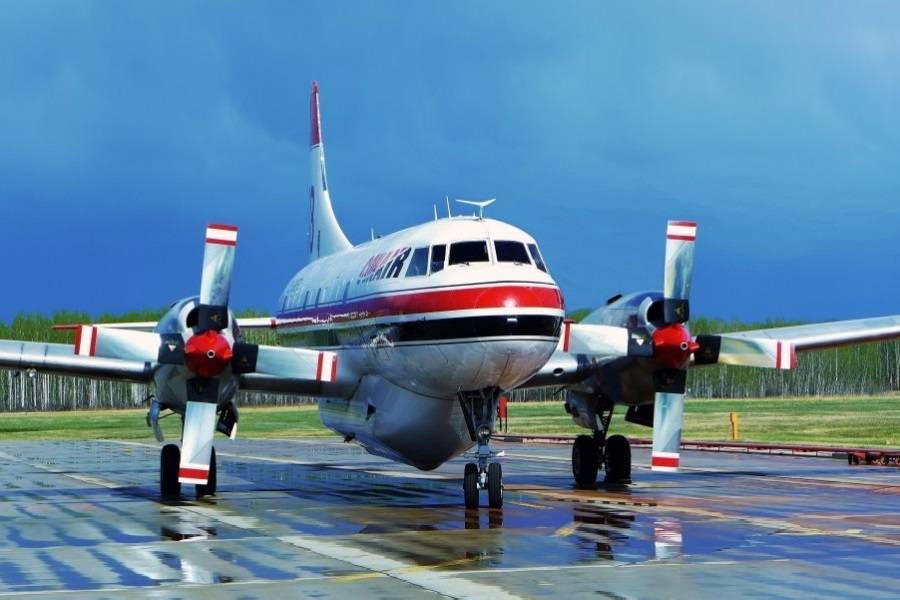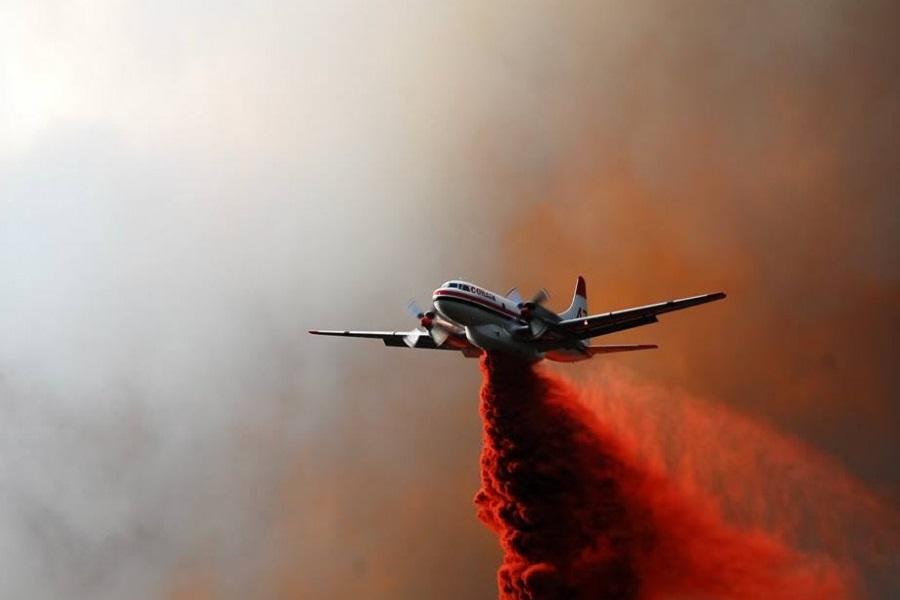The Convair CV-240 “Convairliner” family of aircraft should (?) have replaced the DC-3. They didn’t, really. But some are still flying today!
There are some designs, in aviation and elsewhere, that fall under the “what might have been” category. What you are looking at here is certainly one such example. A design that could, and SHOULD have been a great success, but never quite had the impact it deserved. Convair’s CV-240 was better than the DC-3 in every possible way, except two. Firstly, many of us think it isn’t quite as good-looking as a DC-3 – but that’s subjective. Secondly, it wasn’t free.
![Convair CV-240 – A Great DC-3 Replacement [almost]](https://mentourpilot.com/wp-content/uploads/2021/03/convair_model_110_1.jpg)
It’s easy to forget today that when the DC-3 showed up in the 1930s, it was ‘the’ modern airliner. But this was in 1936. Along with the slightly smaller DC-2 that preceded it, it was a brilliantly modern design. However, with the developments WWII had brought to aviation, airlines and manufacturers thought (knew!) that it was becoming obsolete. Convair’s answer to it was first the Model 110, then the CV-240.
![Convair CV-240 – A Great DC-3 Replacement [almost]](https://mentourpilot.com/wp-content/uploads/2021/03/convair-CV-240_6.jpg)
The Origins of the Convair CV-240
It was American Airlines that first requested it. Model 110 would be better than the DC-3 in every possible way. It had tricycle landing gear, that made boarding and loading easier, and gave pilots better visibility on the ground. Also, it had more powerful engines – still Pratt & Whitney radials, but bigger than those of the DC-3. It could seat as many or more people (30) in more comfort. And it also had integral airstairs (front and ventral), a big deal in many small airports.
But before the 110 could complete development, American decided that they wanted more. Convair’s first production design was the CV-240, with many improvements. It had more powerful engines, and could now seat 40 people, in a longer and thinner fuselage. It also had pressurization, for the first time in a twin-engined aircraft. American Airlines was the launch customer, introducing it to service in 1948.
![Convair CV-240 – A Great DC-3 Replacement [almost]](https://mentourpilot.com/wp-content/uploads/2021/03/convair-CV-240_5.jpg)
It would be wrong to suggest that the Convair CV-240 family was a failure, commercially. With a production of 1,181 commercial and 512 military sales (as the C-131 Samaritan), at its time the design was a success. But expectations were still higher, and the plane didn’t stay in production for very long. Convair could never produce the CV-240 and its successors at big-enough numbers, to keep up with demand. Even when the last new models left the factory in 1954, the DC-3 still pressed on unphased.
The CV-240 Family Gets Turbinized
However the story of the Convair CV-240 didn’t end when the last one left the factory. By then, the bigger CV-340 (four more seats) had also flown. Then the CV-440 came about, with improvements specifically intended to allow it to compete with turboprops. Convair had worked on turboprop versions of the CV-240 family already in 1950, initially without success. But that eventually changed.
![Convair CV-240 – A Great DC-3 Replacement [almost]](https://mentourpilot.com/wp-content/uploads/2021/03/Nolinor-Convair-CV-580-C-GQHB-2008-09-13-YVR.jpg)
We already saw how the DC-3 design also underwent turboprop conversion successfully. But the pressurized cabin of the Convair CV-240 made it a better fit to turboprop use. The plane could take full advantage of the technology, flying higher and with better comfort for its passengers and crews. It was actually the Allison engine company that developed the CV-580, with these engines. The higher power of the engines necessitated a bigger vertical stabilizer and modified horizontal stabilizers.

A Lack of Successors And… Fire!
Turboprop conversions gave Convair’s CV-240 family a new lease of life. Conversions came from CV-340 and CV-440 aircraft. The definitive turboprop Convairliner was actually the CV-5800. These aircraft were originally US Navy C-131F (CV-340) models. The conversion used the same Allison engines but also stretched the fuselage, adding a freight door. Also, this longer fuselage meant that larger tail surfaces weren’t necessary.

The CV-240 family was a moderate success, that Convair hoped to improve on, as those pesky DC-3s got older. Unfortunately, in commercial terms, the CV-240 was about as good as it ever got for Convair. The company was a successful military aircraft maker, and also made missiles and related components for the military and NASA. But they couldn’t translate this success to commercial aircraft again. The CV-880 and CV-990 aircraft were failures, as we already saw.
But Convair’s CV-240 isn’t quite done yet. The CV-580 still lives on today, as a firefighting aircraft. Conair in Canada still uses it, with a 7950-litre (2,100 US gallon) tank, for water and fire retardant. They will eventually replace the fleet with Q400 conversions in the same role. But Convair’s DC-3 replacement certainly had a good, long run!

The post-war aviation world only had room for large, fast new airliners. Anything smaller faced competition from the cheap and very cheerful DC-3/C-47 conversions. Convair arguably faced ‘unfair’ competition for its CV-240, but this is what it was. That almost a third of the plane’s sales went to military customers, was a testament to its potential!



